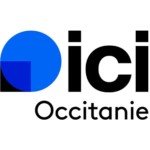
Gestes
Arts et savoir-faire en Occitanie
You may also like...

Delphine Dénéréaz
Contemporary weaving

Clara Denidet
Resumption of care

Théophile Peris
TROBAR LO BIAIS

The world's smallest hotel room
With the N55 collective and Jeanne Gilois, in collaboration with Lucie de Bodinat, Jade Marçais & Jacques-Marie Ligot

Assemblages. Taking Care of Things

À l’atelier
Daniel Chust Peters

